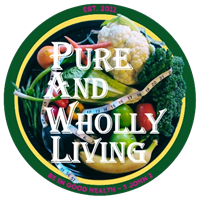It’s hardly shocking to hear that you should eat plenty of fruits and vegetables. Mother knows best — she always told you to eat your veggies so that you could grow up to be a big boy (or girl).
But, a new study is breaking down exactly how many you need of each to live longer.
The study, which was published in the journal Circulation, analyzed data from 66,719 women from the Nurses’ Health Study and 42,016 men from the Health Professionals Follow-Up Study and compared it with information on fruit and vegetable intake and death from 26 studies. After analyzing the data, the researchers found that having five servings of fruits and vegetables a day was linked to a longer life span.
When compared to people who had just two servings of fruit and vegetables a day, those who had five servings a day had a 13 percent lower risk of death from any cause, a 12 percent lower risk of death from heart disease, a 10 percent lower risk of death from cancer and a 35 percent lower risk of death from respiratory disease.
Not all fruits and vegetables are created equal, based on the findings. The researchers discovered that starchy vegetables like peas, corn and potatoes were not linked with a longer lifespan. Fruit juice also doesn’t count, per the study.
Spinach, lettuce, kale and carrots are considered good options for vegetables, while berries and citrus fruits got high marks in the fruit department.
Fruit juice and potatoes specifically got called out in the conclusion, with the researchers writing, “These findings support current dietary recommendations to increase intake of fruits and vegetables, but not fruit juice and potatoes.”
Currently, the American Heart Association recommends having four servings of fruit a day and five servings of vegetables a day. A serving can include a medium piece of fruit, a 1/2 cup of fresh or frozen fruits or vegetables and a cup of raw leafy vegetables.
Rena Zelig, registered dietitian nutritionist and director of the Masters of Science in Clinical Nutrition program at Rutgers University, stated that the study’s findings are “very consistent” with the advice most dietitians currently give. She added, “Both fruits and vegetables are very good for you. They are filled with vitamins, minerals and fiber, and thus have many health benefits.”
So, why do the recommendations lean more heavily toward vegetables than fruits?
Scott Keatley, a registered dietician at Keatley MNT, says that a lot of it comes down to calories. “Fruit, generally speaking, has more calories than vegetables and, over time, having more vegetables will allow you to get full with fewer calories.”
And, according to Mary Cochran, a registered dietitian with the Ohio State University Wexner Medical Center, “It would make sense that if people eat more vegetables, they are getting a higher concentration of these important nutrients, which could lead to improved health outcomes.”
But why were potatoes, peas and corn called out?
Also not shocking to nutrition experts, Zelig says, ”Potatoes, peas, and corn are known to be starchier vegetables.” These vegetables also have more calories than their counterparts. Keatley states, “They all can be part of a healthy diet but, when comparing, say, spinach, which has seven calories per cup to peas, which have 118 … there is no competition. Keeping calories in line with what is necessary for your body and workload is the No.1 thing you can do to maintain your health long-term.”
To get more fruits and vegetables in your diet, Zelig recommends building your dishes around them. “I love to tell my patients to build their meal around a salad,” she says. “You can be so creative with it, and can add your protein—chicken, meat, fish, beans, nuts and cheese — and even carbohydrates in the form of whole grains, while making the vegetables the star.”
How to get more veggies in your diet…
If cleaning and prepping produce is a chore for you, try buying them pre-chopped, when you can. Slip them in your soups and smoothies.
Another tip is to keep a fruit and veggie bowl out in the open. I’ve implemented this practice for almost two decades and have noticed family members have followed suit. This makes it so much easier to grab a fruit rather than search the cupboards for a shelf-stable snack.
You can even reframe your appetizers and desserts to center around fruits and vegetables. Keatley suggests getting in the habit of having a crudité platter or vegetables as an appetizer and fruit with your dessert.
Banana split, anyone?
Adapted by yahoo!life

